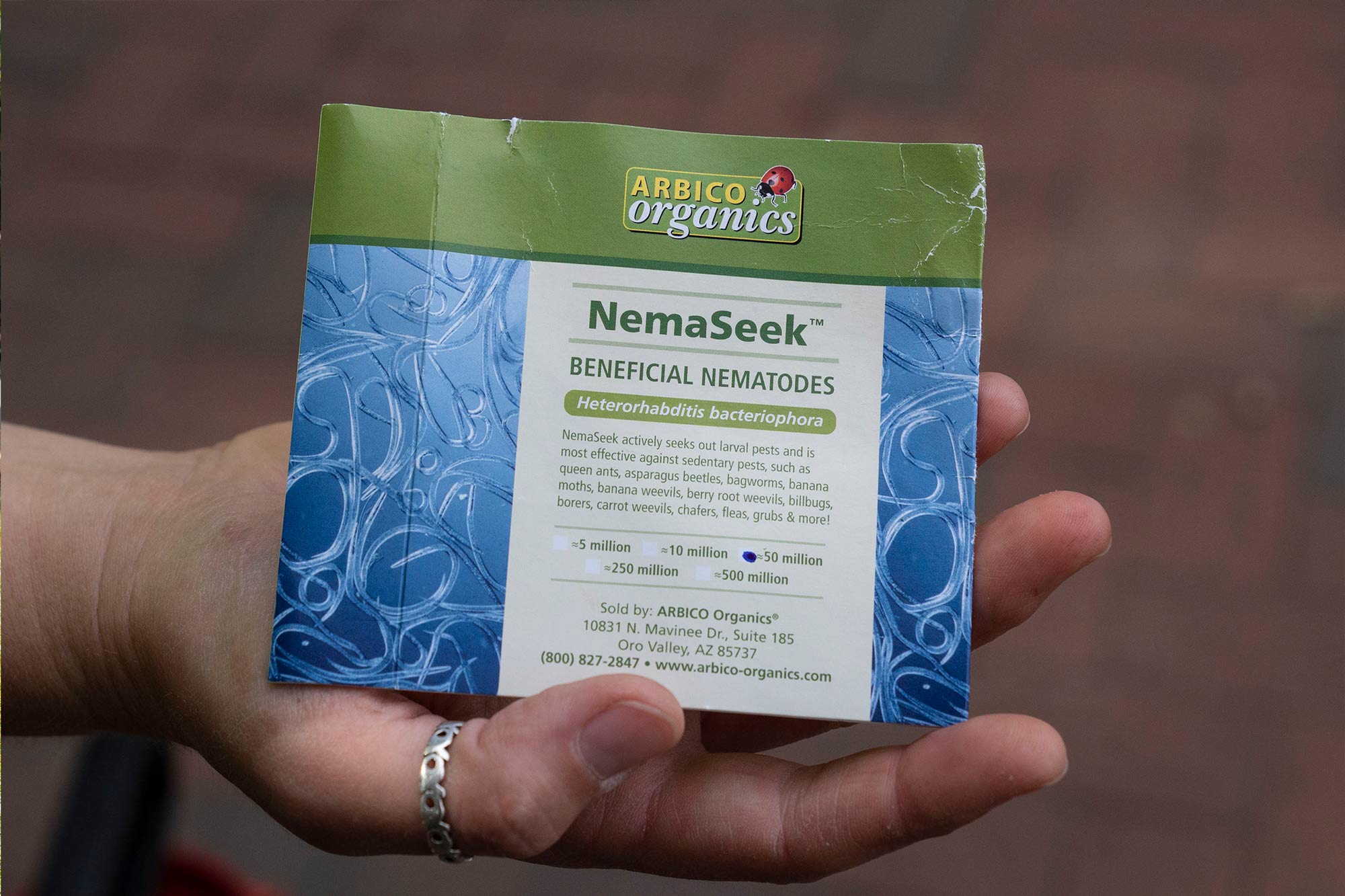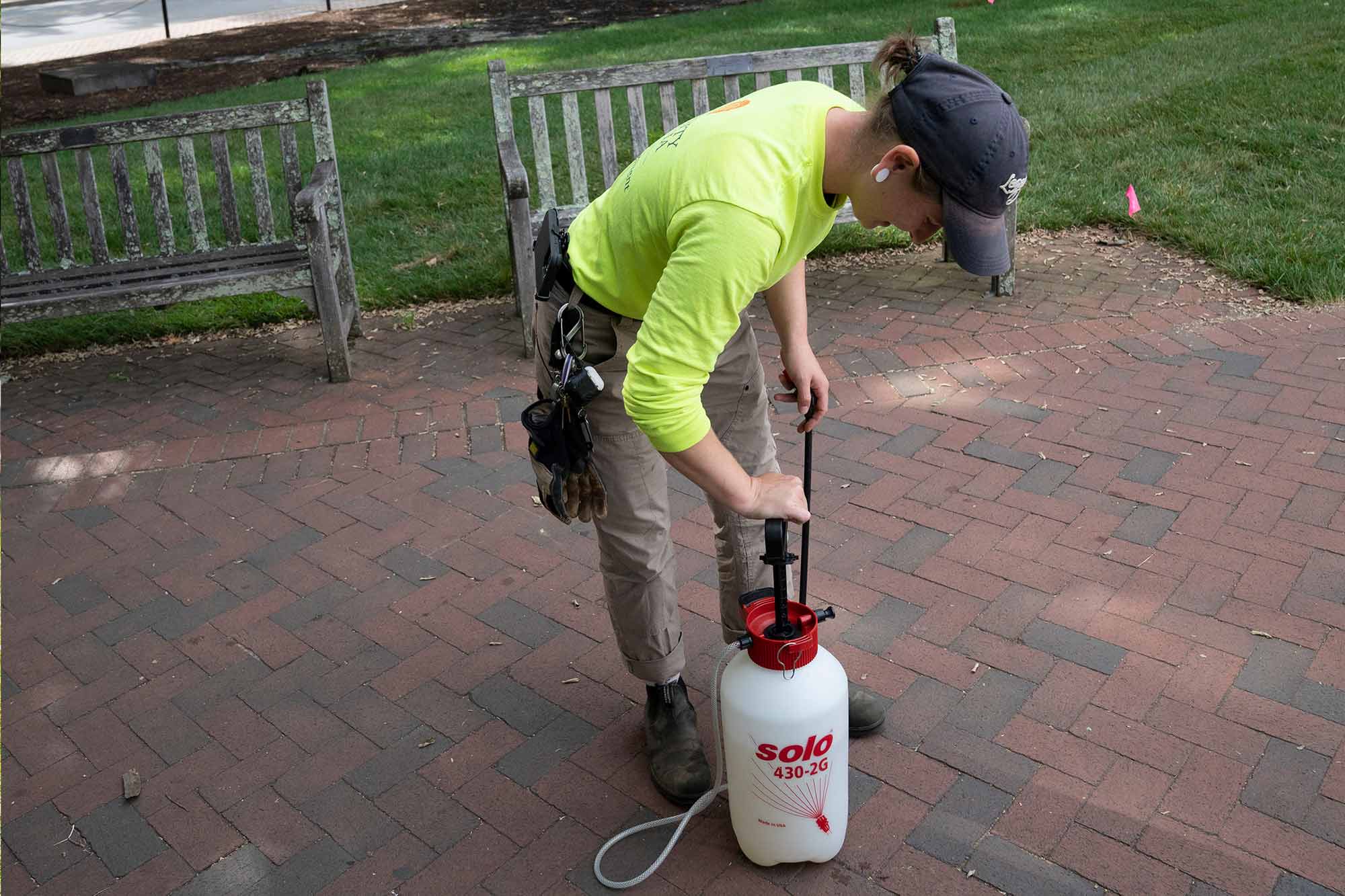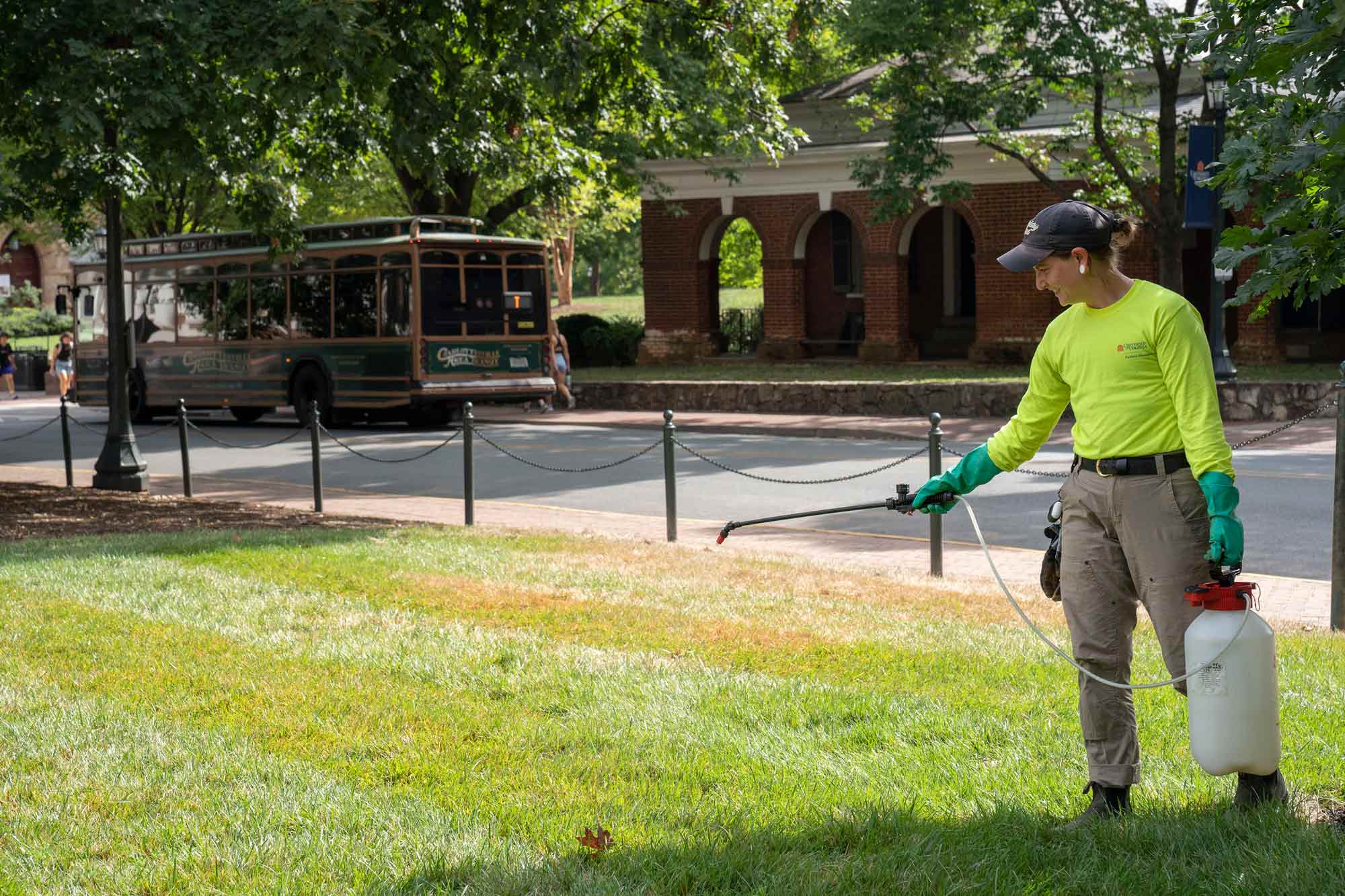Em Ford walked carefully around a recently sodded patch of lawn in front of the University of Virginia’s Alderman Library, spraying a watery mix of nematodes, a beneficial roundworm, in a grid pattern to destroy grubs that would damage the new turf.
It’s a case of nature helping to balance nature.
“The grubs in questions are those of the invasive Japanese beetle, Popillia japonica,” said Ford, the University’s landscape plant health specialist. “This is the time when beetles have mated and laid their eggs in the soil for their grubs to develop through late summer, fall, winter and next spring, thus emerging as adults around June.”
The soil-dwelling grubs feed on the roots of plants; in this case, the roots of the turf grass. They ultimately kill it from beneath the surface.
“They can impact many other plants and either lead to poor plant health or the untimely death of the plant,” Ford said. “The grubs’ impact on the plant and the plant’s ability to survive depends on the number of grubs, the size of the plant and what’s happening to the plant above ground.”
While fatal to grubs, the microscopic nematodes are not harmful to humans. Students walked and lounged nearby as Ford sprayed, oblivious to the battle of roundworms against grubs soon to take place underneath their feet. Ford spreads about 10 million nematodes to cover an area of around 3,200 square feet.
Ford chose these nematodes because they seek out the grubs and infect them with natural bacteria called Photorhabdus luminescens. The nematodes have a symbiotic relationship with the bacteria within them. When the nematode infects the grub, the bacteria kill the grub with the nematodes’ help, allowing both nematode and bacteria to feed and reproduce.

“These bacteria and parasitic nematodes infect and kill insects similarly to the way pathogens and bacteria can infect and kill humans – by making them sick,” Ford said. “Once the bacteria are regurgitated by the nematode it works fairly rapidly, killing grubs in less than 24 hours. The bacteria do not infect eggs, but [beetles] are only in their egg stage for seven to 14 days; the nematodes are able to reproduce and their numbers increase in the soil as long as a host is present.”
With the past mild winter and spring, a large number of beetles survived that normally would have suffered a natural culling by a colder winter.
“The nematodes will remain in the soil and can persist for about four weeks without a host,” Ford said. “Some research indicates they can last up to 700 days without a host, but this longevity is heavily dependent on environmental conditions.”

The nematodes remain refrigerated until Ford mixes them into a water solution in the pressurized sprayer. Ford turned on a sprinkler to moisten the soil near the library before applying the nematodes in the cooler morning hours.
While spreading the nematodes, known as Heterorhabditis bacteriophora, Ford pointed out the wasps that hovered over the turf. The wasps, Scolia dubia, are a telltale sign grubs are present, as they seek out the grubs to lay their eggs in them. Ford, who is trying to achieve a balance in nature, said there were too many grubs to leave to the wasps to kill.
Nematodes, commercially available for more than 50 years, have been used before on Grounds. Earlier in the day, Ford spread nematodes on the recently sodded lawn at Carr’s Hill, the official residence of the University President Jim Ryan.
“Nematode application is a very common integrated pest management strategy,” Ford said.
Media Contact
University News Associate Office of University Communications
mkelly@virginia.edu (434) 924-7291
Article Information
May 3, 2024






